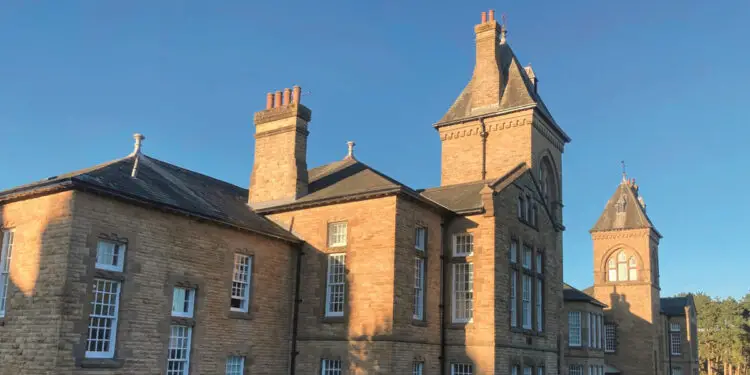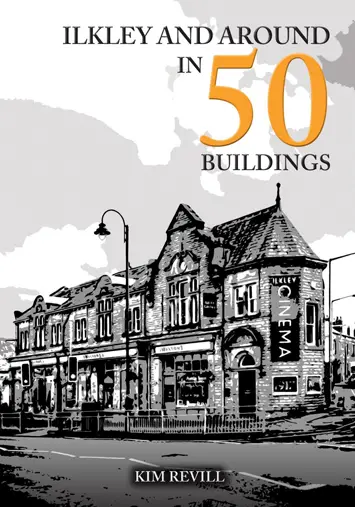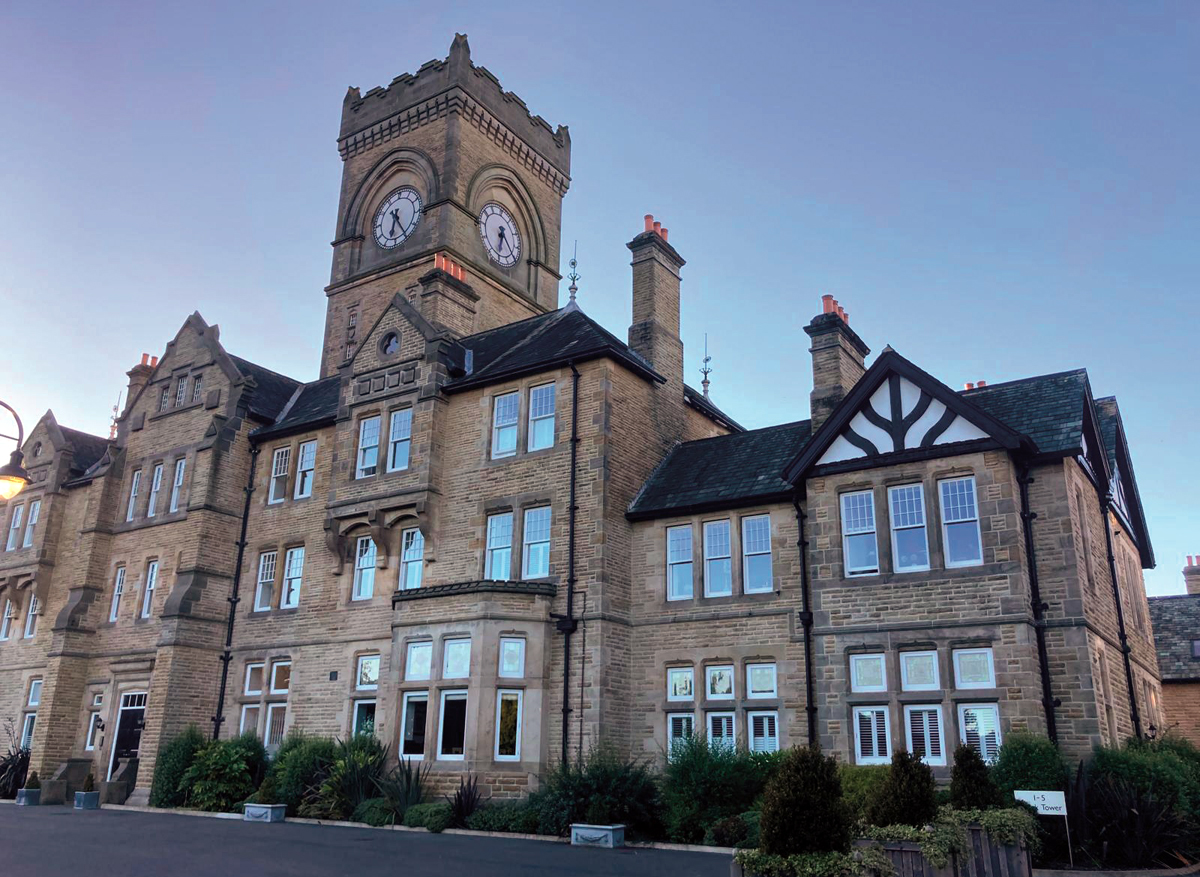The History of High Royds, Menston

By Kim Revill
High Royds – now known as Chevin Park – is a former psychiatric hospital that first opened in 1888. In Victorian times, the hospital was also known as the West Yorkshire Pauper Lunatic Asylum.
During the Victorian and Edwardian era, those committed to asylums did not even have to fit the brief for traits of insanity. Women, in particular, were often incarcerated at the insistence of their husbands if they were said to be feeling ‘sad’ following childbirth. Others could be committed to the asylum for simply being branded a ‘nagging wife’ or being deemed ‘difficult’. Pastoral and holistic care were not on the agenda for many patients as is the normal and decent practice today.
Many suffering with severe depression or ‘insanity’ were administered electroconvulsive therapy (ECT) or, worse, they were lobotomised. When not being treated, patients were permitted to use the facilities at High Royds, which had a library, surgery, bakery shop, dispensary and even a cobblers’ workshop.
“Centrepiece”
High Royds was set in 300 acres of land and patients were expected to tend to the landscaped gardens, work on the nearby farm and carry out domestic work to earn their keep.
Timekeeping was an essential part of daily routine both for the staff and patients, and a reminder of this was the handsome clock encased in the castellated rectangular tower at High Royds, still standing and preserved to this day. It provided, and still provides, a wonderful centrepiece of the former hospital that was converted to flats shortly after it finally closed in 2003.
The clock tower has splendid battlements and Gothic arches and was made by those ubiquitous Leeds clock makers, Potts and Sons, who were part of a golden age of public timekeeping devices and whose business was first established in the city of Leeds in 1833.
 “Renovated”
“Renovated”
Although many parts of the hospital were demolished and the remaining buildings renovated, High Royds still, today, closely resembles the original hospital building. Several publications have sealed the history of High Royds. These include Mark Davis’s book West Riding Pauper Lunatic Asylum and Those Were the Days!! by F. E. Rogers. The latter chronicled his many years working at High Royds.
Although the hospital closed more than twenty years ago, High Royds has been a popular location for film and television companies and is still a well-loved landmark in Menston. Local indie band Kaiser Chiefs were inspired to pen a song about High Royds, and Leicester rockers Kasabian named an album after it.
Article taken from ‘Ilkley and Around in 50 Buildings’ by Kim Revill, published by Amberley Publishing
High Royds (Chevin Park): Frequently Asked Questions
What is High Royds called today?
High Royds is now the residential development Chevin Park, created from the former hospital buildings and grounds.
Where is it?
Menston, West Yorkshire, between Leeds and Bradford.
When did High Royds open and close?
It opened on 8 October 1888 and finally closed in 2003.
What was its original name?
West Riding Pauper Lunatic Asylum (Menston). It later became Menston Mental Hospital, entered the NHS in 1948, and was renamed High Royds Hospital on 1 January 1963.
Who designed the hospital?
County architect J. Vickers Edwards, using a grand Gothic plan with extensive service buildings and farmland for self-sufficiency.
How big was the site?
About 300 acres of landscaped grounds, farms and service blocks; the historic landscape has been recognised for its significance.
How many patients did it take initially?
The first cohort in 1888 numbered approximately 1,526 patients.
How was daily life organised?
It functioned like a small town: segregated wards, a central chapel, nurses’ residences, laundries, kitchens, craft rooms, a library, bakery, dispensary and workshops. Patients often worked in gardens, on the farm and in domestic roles.
What treatments were used?
A dedicated treatment centre opened in 1927 (surgical theatre, X-ray, dental operating room). By the 1940s, electroconvulsive therapy (ECT) was introduced (at Menston in 1943). Earlier 20th-century practice also included now-outdated and harmful interventions such as lobotomy.
Why did High Royds close?
Post-war deinstitutionalisation, community psychiatry and modern drug therapies reduced long stays. By the 1990s the large dormitory wards no longer met expectations for privacy and multidisciplinary care, and services moved to district sites.
What’s special about the clock tower?
The castellated clock tower with Gothic arches is a preserved centrepiece. Its clock was made by Leeds firm Potts & Sons, noted for public timepieces in the 19th–20th centuries.
Are there tunnels under the site?
Yes. Service tunnels—often called the “labyrinths below”—carried heat, power and supplies between wards and utility blocks.
What remains of the original hospital?
Many listed buildings were renovated and converted to housing; some ancillary blocks were demolished. The architectural silhouette—administration block, clock tower, and set-piece vistas—remains familiar.
Can the public visit?
Chevin Park is primarily a private residential area. Access varies by zone; observe local signage and rights of way.
Has High Royds appeared in film or TV?
Yes. Since closure it has been a popular location for film and television due to its intact period architecture and dramatic setting.
Any cultural references?
Kaiser Chiefs wrote the song “Highroyds,” and Kasabian titled an album “West Ryder Pauper Lunatic Asylum,” a play on the site’s original name.
Where can I read more?
Recommended resources include West Riding Pauper Lunatic Asylum by Mark Davis, Those Were the Days!! by F. E. Rogers, and curated photo/oral-history collections about High Royds/ Menston.
